Best of MUSUBI: The Vikings of Japan
Top photo: skyhigh.ring on PhotoAC
Welcome to Best of MUSUBI, where we revisit articles from the past and breath new life into them with updated information and photos!
Here’s something you won’t find on the History Channel: Vikings came to Japan in the 1950’s. Well, not that kind of Viking.
In Japan, the word ”Viking” means more than just the Norse explorers and warriors of Northern Europe. The much more common usage of the word Viking (baikingu or バイキング) refers to a buffet. As in, the all-you-can eat plate filling tradition that the historical vikings would probably enjoy if they time-travelled.
For visitors to Japan, it’s often a surprise to find a “Viking lunch” and “Viking dinner” at their hotel. But such is the case! The more uniquely Japanese 食べ放題 (tabehoudai) is used as well. But you’re reading this because you want to know the story behind the Viking thing, right?
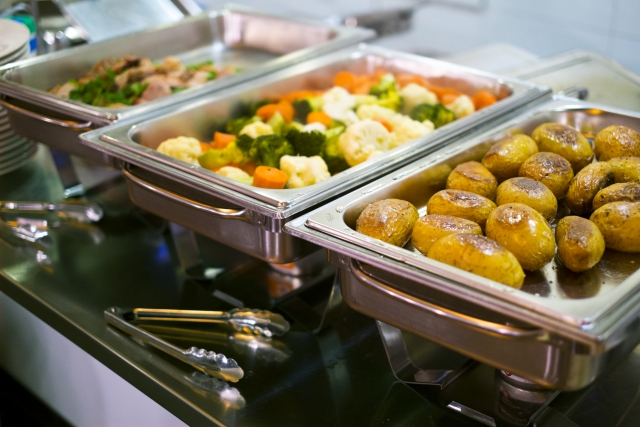
Photo by cheetah
A Brief History of Japanese Vikings
Even today, Japan still imports many natural resources. These include food, even as farming technology has improved. For every food item grown domestically, something comes from abroad. Historically, food in Japan was expensive and precious. In fact, famines were once common throughout Japanese history. The idea of an all you-can-eat buffet was unimaginable in Japan until the economy started to grow in the latter half of the 20th century.
Tokyo’s Imperial Hotel was designed by Frank Lloyd Wright in 1915. It’s sandwiched between the Imperial Palace and Tokyo’s posh Ginza shopping district. It was (and still might be) Japan’s best hotel. In the late 1950’s, a restaurant manager from the hotel in Tokyo traveled to Sweden. He was inspired by Swedish Smörgåsbord (buffet) restaurants. When he took his idea to the Imperial Hotel, they were enthusiastic.
The only problem — “Smörgåsbord” doesn’t sound catchy in Japanese. In fact, most people found it difficult to even pronounce.
They needed a better word to promote the buffet idea. At the time, The Vikings (a 1958 film starring Kirk Douglas and Tony Curtis) was in the theaters. Somebody at the hotel saw the movie and got inspired. Viking was a perfect word for buffet-style dining. After all, Vikings and smörgåsbords are both from Northern Europe. Best of all, it’s easy to pronounce in Japanese (baikingu).
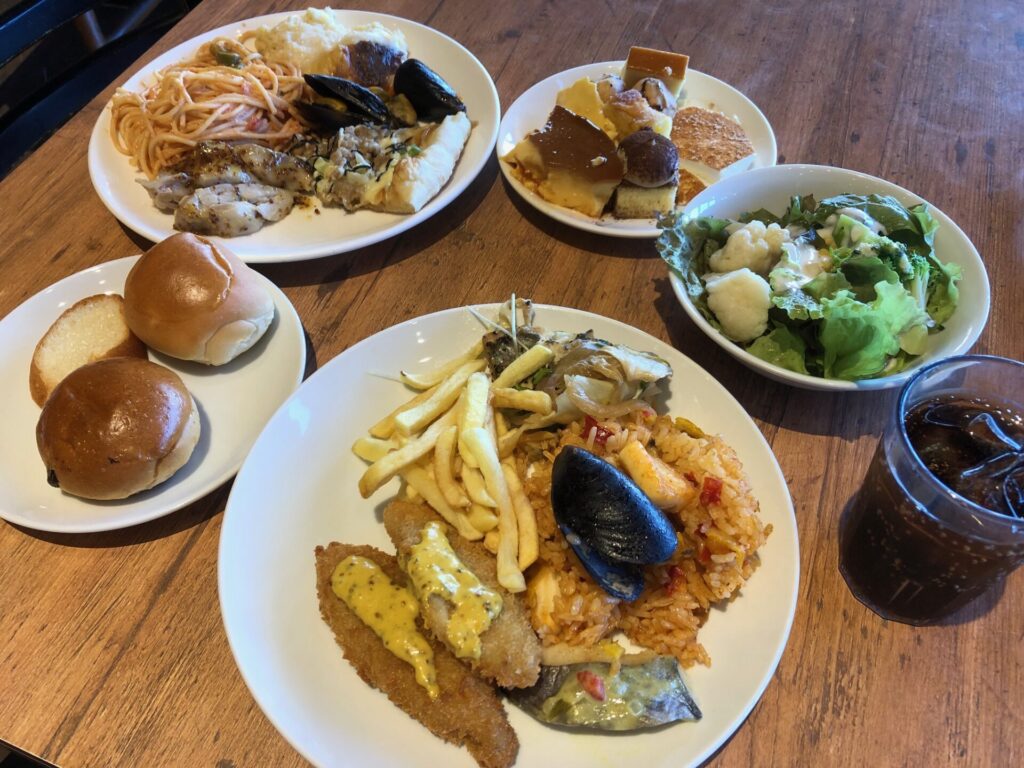
“At Fisherman’s Market, Kobe” by Lupa L., taken for MUSUBI by Borderlink ©2023.
The Vikings Today
The restaurant was a success. The Viking restaurant concept spread to every corner of Japan in the 1960’s and is popular until this very day. I personally recommend The Fisherman’s Market in Kobe.
The all-you-can-eat concept gained success in other areas. These include conveyor belt sushi restaurants and yaki-niku places (which are now synonymous with all-you-can-eat style). For a reasonable price, you can get plenty to eat. And best of all, they include a drink bar!
A Viking lunch or dinner is a great meal to enjoy with friends or family, especially those visiting Japan who may be picky eaters. There’s always something to enjoy in them for all. They also commonly feature a mix of eastern and western dishes. Salad bars, dessert platters and chocolate fondue are often regular fixtures as well.
As we get further away from the height of the Covid-19 Pandemic, buffet-style restaurants have come back into favor, even with adjustments to how they operate to maintain safety and cleanliness. Their popularity has kept them around and kept patrons coming back for another plate or two. Or three.
Just please remember proper buffet etiquette, and don’t start any swordfights over that last slice of prime rib.
Photo Credits:
Top photo: skyhigh.ring on PhotoAC
Additional photos by cheetah and Lupa L.
All other content (text) created by the original author and © 2023 MUSUBI by Borderlink
Embarking on a journey to make friends in Japan, a country renowned for its unique language and culture, can feel both exhilarating and daunting. However, the process becomes much more accessible when you focus on the “where” rather than getting too caught up in the “how.” What is important is that you go out and open yourself to the opportunity for meeting new people and the rest will hopefully come naturally. So, without further ado, in this blog post, we will explore various settings and locations in Japan that naturally facilitate connections and foster friendships, even if you don’t speak the local language.
In major cities like Tokyo, Osaka, and Kyoto, there are numerous international cafes and language exchange events specifically designed to bring people from diverse backgrounds together. These venues provide a comfortable setting for socializing, practicing language skills, and making friends who are open to cultural exchange. Keep an eye out for events advertised online or through community bulletin boards.
Most likely though, you will be one of the many people who are located in a much more rural area so in that case, you can try engaging in recreational activities or enrolling in classes. This not only allows you to pursue your interests but also connects you with individuals who share similar passions.
Whether it’s joining a sports club, taking martial arts lessons, participating in a traditional tea ceremony, or learning how to make sushi, these experiences offer a common ground to build relationships beyond language barriers. Most city halls have flyers of the many groups and activities going on in the area at any given time, so go in and check out what they have that you might be interested in.
There are usually many traditional arts and crafts groups that gather regularly. Participating in cultural workshops such as these or volunteering in heritage preservation programs can introduce you to like minded individuals who are passionate about preserving Japan’s cultural heritage. Whether it’s learning calligraphy, trying your hand at pottery, or joining a traditional music group, these activities foster connections through shared experiences and a mutual appreciation for Japanese traditions.
Japan is home to a vibrant expatriate community, and many cities have established organizations and groups catering to foreigners living in the country. These communities often organize regular meetups, cultural events, and social activities that are welcoming to newcomers.
Attend gatherings organized by these communities to meet people who share similar experiences and can offer insights into navigating life in Japan. Many of these communities gather online through social media platforms such as Facebook, Reddit or Meetup so you’ve got nothing to lose by looking through these apps.
Japanese festivals, known as “matsuri,” hold a special place in the country’s culture, celebrated with great enthusiasm throughout the year. These vibrant events not only allow you to immerse yourself in local traditions but also provide a wonderful opportunity to meet friendly locals who are eager to share their customs with you. From mesmerizing fireworks displays to captivating traditional dances, participating in these festivities can lead to unexpected encounters and forge lasting friendships.
One of my expat friends, for instance, used to partake in the Mizukake matsuri in Iwate every year. Despite its unusual nature, where participants wearing only momohiki (Japanese traditional underwear) run through the streets while getting water thrown on them in the middle of January, those involved find joy in feeling cleansed and warmed afterward as well as the bonds they make with the people they run with. Even to this day he swears by this festival, and I only have to take his word for it from the many friends he surrounds himself with.
Allow me to share a personal experience of meeting one of my closest friends. During my first week in Japan, while walking alone at nine o’clock in the evening in my rural village in Iwate, a car pulled up beside me, and the driver started calling out to me in English. Initially, I felt a bit apprehensive, so I ignored them. However, they persisted, so I cautiously approached the car and asked what they wanted.
It turned out they were inquiring if I was the new ALT (Assistant Language Teacher) in the area, to which I replied affirmatively. Without any hesitation, they handed me some snacks – Pringles, KitKats, and a bottle of Coke – and simply said, “Welcome to Japan.” With that, they drove off, and although I never encountered them again, that brief interaction remains etched in my memory.
Inspired by their kindness, the next day, I visited a store and purchased the same three items I had received, and approached a woman who was walking with her newborn baby, only a few months old. I offered her the snacks, and she expressed her gratitude before continuing on her way.
Surprisingly, the following week, while out for a walk, I crossed paths with her again. She took the opportunity to express her thanks once more, sharing that both she and her husband had truly enjoyed the treats. In fact, her husband expressed a desire to meet me and treat me to dinner someday.
Intrigued, I agreed, and we set a date. As it turned out, her husband and I had an instant connection, sharing similar tastes in music, movies, and hobbies. What started as a single dinner grew into a lasting friendship, with subsequent dinners, outings, and regular meetups. Despite eventually moving to a different part of the country, I make it a point to visit Iwate every year, simply to catch up with my friend over a beer or two.
While I acknowledge that my approach of responding to a stranger’s call was risky, I must emphasize that it is not a recommended approach. Nonetheless, this anecdote serves as a reminder that putting yourself in the right place can greatly enhance your chances of finding friends.
I’ve encountered many wonderful individuals simply by frequenting neighborhood establishments like cafes, bars, and local markets, and being open to striking up conversations with the people I come across. Even if language barriers seem insurmountable, genuine curiosity and a warm smile can transcend linguistic limitations, creating opportunities for meaningful connections.
In an ideal world, all relationships would unfold as beautifully as this one did. Taking the initiative and venturing outside of your comfort zone can yield extraordinary outcomes. However, it’s crucial to exercise caution and ensure your safety while seeking connections in unfamiliar surroundings.
When seeking to make friends in Japan, it’s crucial to focus on the “where” rather than getting caught up in the “how.” Exploring international cafes, attending language exchange events, joining expatriate communities, immersing yourself in local festivals, participating in recreational clubs and workshops, and engaging with the local community are all excellent avenues for forming friendships in Japan, regardless of the language barrier.
Embrace the adventure, step out of your comfort zone, and discover the welcoming places and warm-hearted individuals who are eager to connect and share their experiences with you in this remarkable country. Let me leave you with one final piece of advice, while overcoming the initial hesitation is crucial, it’s worth noting that the people you encounter may be just as eager to meet you as you are to meet them so relax and be yourself!
Photo Credits:
All other content (text) created by the original author and © 2023 MUSUBI by Borderlink
Top photo: Ctana817 on PhotoAC
Some of us only have a short time to visit Osaka. I designed a short itinerary that can be completed during a higaeri ryokou (日帰り旅行). That’s Japanese for a one-day trip. Alternatively, you could visit most of these before staying overnight at a reasonable hotel near Shin-Osaka station for shinkansen access. While I also enjoyed my visits to Osaka Castle, the Korean “Tsurushin Square” in Tsuruhashi, and many ancient kofun in the Osaka area – this article does not include visits to them.
Nakanoshima: Enjoy some art!
The trip should start off at Nakanoshima. The Nakanoshima Museum of Art is a fantastic art museum with memorable exhibits. This is a great spot to go to after arriving as it is best visited in the early day, for an hour or two. The island itself has a nice park on the eastern end.
America-mura & Lunch
After you’ve had your fill of mostly modern Japanese art, then go to Higobashi Station and catch the Yotsubashi Line to Yotsubashi station. You can get off and pass through America-mura (literally “America village”). Not everyone is hunting for retro American clothes – but it’s fun to get a feel of this area’s vibe. You need a big stomach to enjoy Osaka – so save some stomach space by stopping for a latte or “ale” while enjoying the modern Korean-Japanese aesthetic of the Rocoki Cafe.
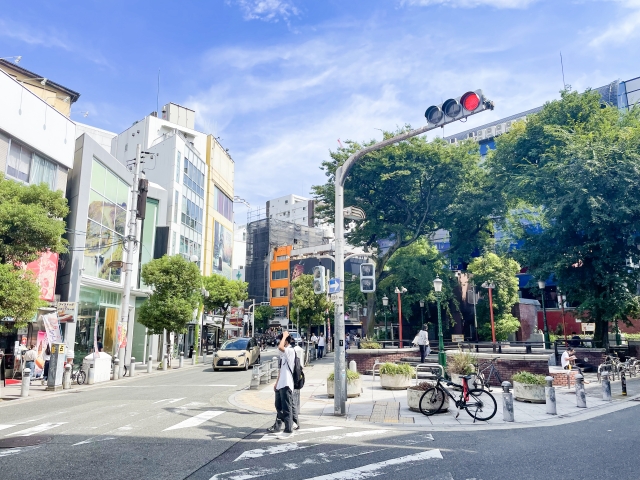
Photo by 潜伏たなか
Alternatively, you could grab a bottle of coke and play on some classic pinball machines at THE SILVER BALL PLANET in Shinsaibashi Bigstep. Bigstep is not a bad place to get lunch if you like Club House Sandwiches, curry, or Japanese-style Gapao Rice.
Mido-Suji: Shopping Street
From there I would pass through Mido-suji – a famous shopping street featuring high-end brands. Unless you’ve got a big budget or want to get new Apple products – this is probably just an avenue to walk through and snap a few photos of. You can admire the storefronts and architecture.
Shibsaibashi: The Arcade
After that you could head north for some shopping (or window shopping) at Shinsaibashi Parco. There are some great character goods shops here featuring Godzilla, Jackie’s Dream (The Bear’s School), and Capcom characters. There are lots of small restaurants and cafes to grab a light lunch. The area around Parco is full of high-end brand-name stores. The Daimaru to the south is even more high-end. There is a Pokemon Cafe in there.
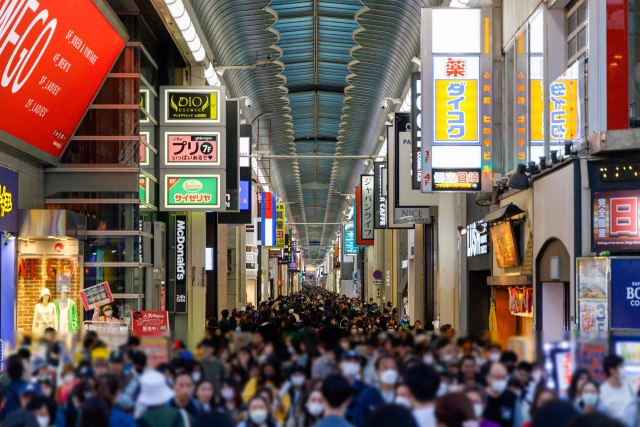
Photo by 520
The place to go afterwards is the Shinsaibashi-suji Shotengai (Shinsaibashi Street Covered Shopping Arcade). In Osaka they use the “suji” kanji for muscle or artery (筋) to mark a street. Remember where this shopping arcade is.
Ukiyo-e Museums: Get some Culture
There are two small Ukiyo-e museums in Osaka. These are my favorite places to get wall decorations for small apartments in Japan. The Osaka Ukiyo-e museum often shows Hiroshige and Hokusai prints. The gift shop is amazing. It’s closer to the north end of the Shinsaibashi-suji Shotengai, so I’d definitely visit it around the midday or early afternoon. The other Ukiyo-e museum is the Kamigata Ukiyoe Museum south of the Tonbori river in Dotonbori. The latter features portraits of Kabuki actors – some of their works were owned by Van Gogh!
Dotonbori: Leisure
After you’re done at the north Ukiyoe museum, you can walk down the Shinsaibashi-suji Shotengai to the Tonbori riverside. You’ll see a small bridge called “Ebisu-bashi” here. You should come back here at night to see the advertisements lit up. It’s rather incredible. You can spend a lot of time in the Dotonbori areas. I would recommend the Round1 Stadium Sennichimae for Karaoke with friends, arcade machines, or bowling.
Sennichimae is actually a shopping district south of Dotonbori that stretches down to Sennichimae Doguyasuji Shopping Street. A cool shop to see in this area is Yamashita Kanamono (山下金物) which features many of the best Japanese knives and kitchenware. You’ll likely find lacquerware in this area as well.
Denden Town: Electronic Goodness
If you have more otaku interests, then a great place to spend time is Nipponbashi Denden Town. Similar to Akihabara, it features arcades, electronics shops, manga, cosplay cafes, and more. I won’t lie, I enjoyed the model trains here. If you’re dying for American nerd culture, then visit Goonies – a sort of semi-America-themed Takoyaki restaurant.
Ebisucho: Time to Eat (Again)
Just five minutes south of Denden Town is Ebisucho station. You will probably notice the Tsutenkaku tower from there. This is the icon that defines Osaka’s retro and kitsch. An example – there’s a museum dedicated to instant chicken ramen inside! Depending on the season, this is a great spot to catch the sunset. The typical ritual is to visit the fifth-floor observation deck to rub the soles of Billiken after a donation. And no, he isn’t some ancient kami. The character was invented by an art teacher named Florence Pretz from Kansas City, Missouri in the USA over a century ago.
I would use Ebisucho station to return to Nanba and spend the twilight and/or early evening near the Dotonbori area. As mentioned before – don’t forget the views from Ebisu-bashi at night.
The must-eat food of Osaka can be found here – kushikatsu. Basically, you order whatever you’d like from the menu breaded on a stick and laid on some cabbage. There is an incredible sauce to dip it in – but never dip twice! This is against any proper kushikatsu restaurant’s rules (and is not hygienic!). Some kushikatsu restaurants will also feature typical izakaya sides. My suggested places are the famous Daruma chain shops, Shirotaya, Nishiki, and the kushikatsu izakaya Fuuta (風太).
And Beyond!
But there are plenty of incredible shops to eat various cuisines in around Dotonbori, especially near Hozenji. This small temple is incredible at night – as are the Showa-era style streets. The establishments are too numerous to name. This is a yokocho – an alleyway. If you crave an authentic Japanese night out, then this is the place to be.
If you’re looking for a second party, then you’ll find various small establishments around the Tonbori river. Please enjoy your time responsibly – try not to “eat until you’re broke/defeated” unless you are a true Osakan(食い倒れ). Alternatively, the Kasayacho-suji and Suomachi-suji roads have many establishments. Just be careful not to walk into a shady one.
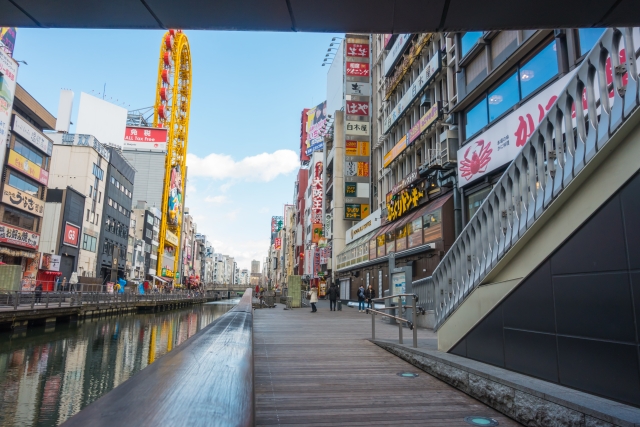
Photo by G photo
You can make it back to your hotel, train station, or bus stop from either Nanba station or Shinsaibashi station at night.
Speaking of Nanba (often spelled “Namba”) – you may have noticed that I didn’t mention it. The Nanba area near the station has great shopping arcades, malls, theaters, and more. But I would save it for another day.
Some links to check out in advance:
Tsurushin Square
https://tsurushin.com/
Nakanoshima Museum of Art
https://nakka-art.jp/
SILVER BALL PLANET
https://www.silverballplanet.jp/
Shinsaibashi Parco
https://shinsaibashi.parco.jp/shop/detail/?cd=026275
Osaka UKIYOE Museum
https://osaka-ukiyoe-museum.com/
Kamigata Ukiyoe Museum
http://kamigata.jp/kmgt/english/
Kushikatsu Daruma Website
http://www.kushikatu-daruma.com/tenpo_houzenji.html
Yamashita & Co., Ltd.
http://joycooking.net/english/store.htm
Round1 Sennichimae
https://www.round1.co.jp/shop/tenpo/osaka-sennichimae-eng.html
Tsutenkaku
https://www.tsutenkaku.co.jp/
Photo Credits:
Top photo: Ctana817 on PhotoAC
Additional photos by 潜伏たなか, 520 and G photo
All other content (text) created by the original author and © 2023 MUSUBI by Borderlink
Top photo: favoritoRosa on PhotoAC
We all know the hardship of moving to a different country. From adjusting to food and culture to changing your regular skin care products to match what is available in that country. I am not an expert but I have done my research.
I am also one of those people who have lived with pimple scars and breakouts my whole life. So this one is for anyone who recently moved to Japan. There are a variety of skincare products and hair care, you name it. You can literally find anything here and all the more reason to confuse the buyers.
So let’s talk about the weather here in Japan. Summer is humid and hot. While winter is dry and harsh. The weather sure doesn’t go easy on your skin especially when you are new to a place. I arrived in Japan in the midst of humidity and the heat. I started to get breakouts and my skin was getting out of hand.
I changed my skincare to affordable drugstore brands and it actually works. So the five products that I am recommending are products that are accessible, affordable, and mild on your skin. Something that you can afford as a regular skin care product.
The products mentioned below are super easy to get. You can literally walk into any drugstore and get it. All of these are below 1000 yen. I think a lot of the skincare routine that you come across makes us feel like we need to use a lot of products. I personally feel that you just need a good sunscreen and moisturizer for your skin health. There is actually a term for it ‘Skinimalism’. So with all that said, here’s my list!
Hada Labo Vitamin C
This is a lightweight cream that works great on your skin. The texture is watery and helps reduce pores, reduces acne scars, and also to reduce acne. I normally don’t use a toner, so I use it after wiping my face. Normally it is recommended you use it after toner.
Hada Labo Gokujyun Super Hyaluronic Acid Lotion
Moving on to the next product from Hada Labo again. Well, there is a variety of Hada Labo creams and moisturizers, you can always look for what is soothing for your skin type. This moisturizer is said to reduce wrinkles and improve the texture of your skin by rejuvenating. You can use this as a serum or cream.
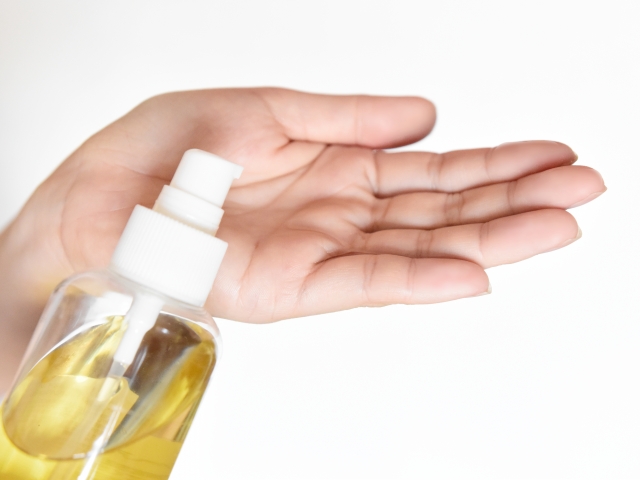
Photo by pho-to-co
Kose Softymo Speedy Cleansing Oil
This cleansing oil has a mixture of oily and liquid consistency. It removes any waterproof makeup on your face within seconds. It is also a washing oil so prior to using a face wash you can wash the oil off. It is extremely gentle on your skin and removes makeup without any fuss.
Skin Aqua
My whole life I never came across a perfect sunscreen. It was either too oily, too dry, or too white. I have had sunscreen that made me look like I had a foundation that didn’t match my skin at all. So this sunscreen has a perfect balance, it doesn’t make you look too greasy or too dry. The texture is gel-like and it dries up pretty quickly on your skin leaving your skin feeling lightly moisturized.
I hope my list of recommendations will be helpful to newcomers to Japan out there. Thanks for reading!
Image Credits:
Top photo: favoritoRosa on PhotoAC
Additional image by pho-to-co
All other content (text) created by the original author and © 2023 MUSUBI by Borderlink
Few dishes capture the intrigue and excitement quite like Fugu, the notorious pufferfish. With its alluring taste and inherent risks, Fugu has become an emblem of Japanese cuisine. From its careful preparation to the thrill of savoring this delicacy, Fugu has captivated the taste buds and imagination of both locals and adventurous travelers alike.
What in the World is Fugu Anyway?
Fugu, the pufferfish with a knack for inflatable impersonations, is the star of this gastronomic show. When feeling threatened, it pumps itself up like a confident puffer, showing off its inflated self. But it’s not just the fish’s party trick that gains so much attention to it; but rather the gourmet potential it possesses.
Japan’s Wild Infatuation with Fugu:
When I first heard about Fugu, I couldn’t help but be intrigued by its daring reputation. The appeal lies in the fine balance between indulgence and risk. What’s the risk? Well, Fugu carries tetrodotoxin, a potent neurotoxin found in its liver, ovaries, and certain other organs. Japanese people embrace the dangerous duality of Fugu—the thrill of indulging in a potential adventure that could make your heart skip a beat or two (or three).
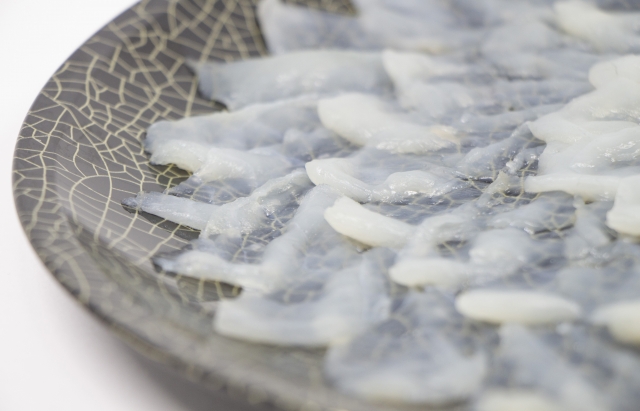
Photo by a HiC
The Art of Fugu Finesse:
Crafting Fugu cuisine requires years of specialized training and a license from the government. Skilled chefs perform their culinary magic, carefully disarming the fish of its toxic parts to leave behind scrumptious, safe-to-eat portions. It’s like a suspenseful cooking show, where every slice and dice is a heart-stopping performance. Eating Fugu is not for the faint of heart, but the payoff is worth it.
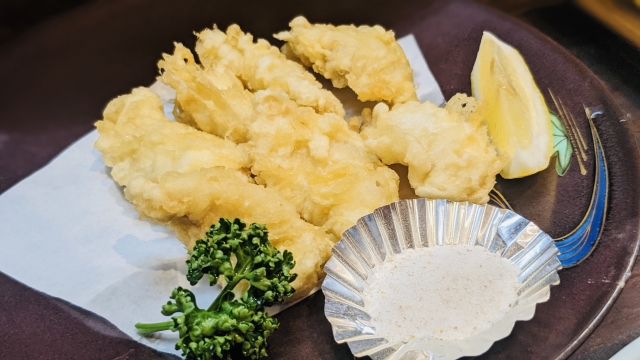
Photo by ゆずきんぐ
The meat itself is a tender, delicacy that is unique to any other kind of sea food and each bite promises a thrilling taste sensation that you won’t find anywhere else. Whether you go for the raw thrill of sashimi, the bubbling excitement of hot pot (nabe), or the deep-fried adventure, Fugu is sure to make your taste buds dance with joy—just be sure you’re in the safe hands of a licensed Fugu master…
Conclusion:
Fugu has become an iconic symbol of Japanese cuisine, capturing the hearts and taste buds of those who dare to embrace its magic. So, if you’re ready to take the plunge into this risky delight, Tokyo’s renowned Fugu hotspots like Zuboraya, Torafugu Tei, or Usukifugu Yamadaya await, ready to whisk you away on a culinary adventure you’ll never forget.
Image Credits:
Additional images by HiC and ゆずきんぐ
All other content (text) created by the original author and © 2023 MUSUBI by Borderlink
Top image: MUSUBI by Borderlink Staff Photographer, © 2023, all right reserved
ALTs are exposed to a wide variety of cultural, social and intellectual experiences when they move from their home country to Japan. Culture shock is the feeling of disorientation experienced by someone when they are suddenly subjected to an unfamiliar culture, way of life or set of attitudes. Here are some ways in which one can cope with culture shock in Japan.
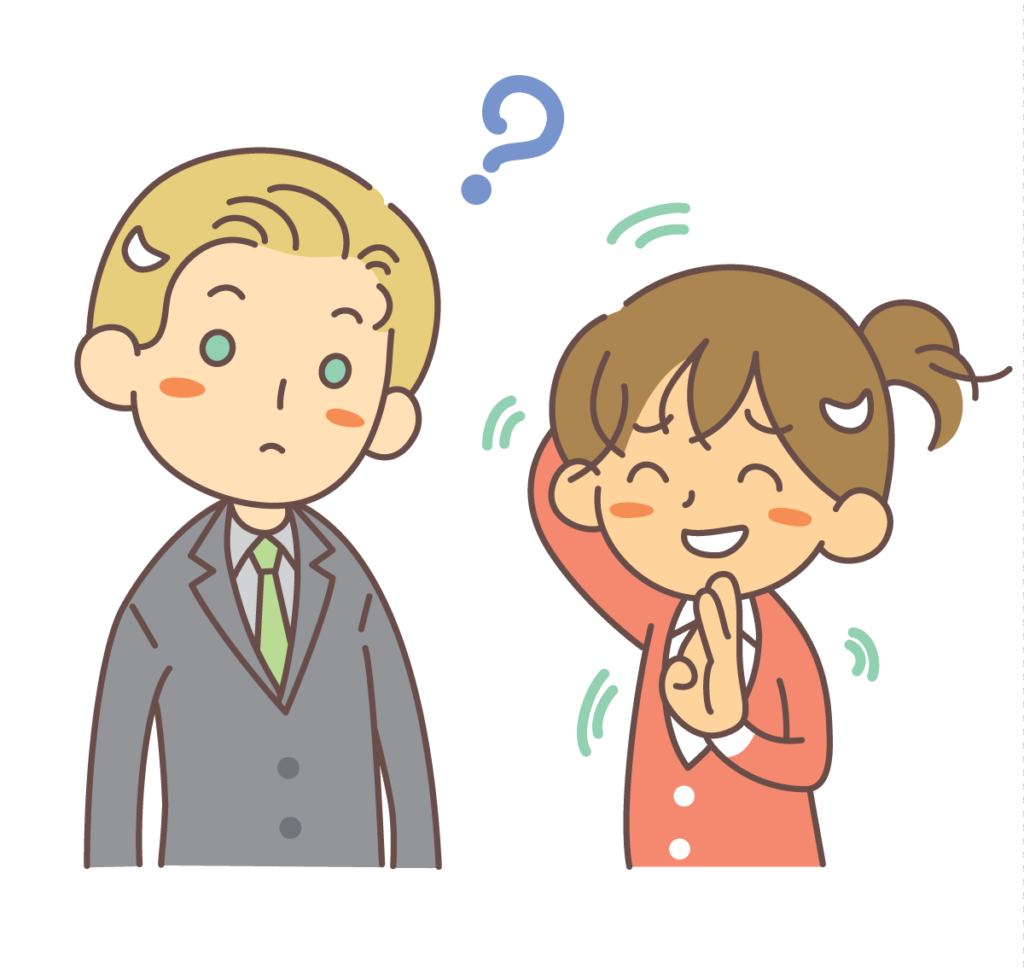
Image by chookcherry on IllustAC
Pre-departure preparation
One must learn as much as as they can about Japan, Japanese Language and the new location they will be going to. This means knowing the good and bad, cultural and social rules, the different time zones, foods, political systems, customs and religions. Basic knowledge of Hiragana and Katakana will go a very long way too in helping to adjust to life in Japan. Thanks to the age of social media, one can easily access such information through Instagram, Facebook, Twitter, Tiktok among others. But always be wary of what’s real, what clearly isn’t, and what is just one person’s experience- it may be very different from your own.
Learn Japanese Language
Learning Japanese is very vital for anyone if they plan on relocating to Japan. This is because Japanese folks can easily warm up to someone once they learn that you can understand their language and culture. Learning to communicate in Japanese will help reduce the effects of culture shock and misunderstanding and this will also reduce the stress on you!

Photo by webbiz
Keeping a Journal
Keeping a journal helps to create order when your life feels like its in chaos. Through keeping a journal, you can process culture shock by reflecting. Reflection is an essential part of the cultural adaptation process whereby ones gives thought on what’s happening to them or around them. It allows one to ask questions like, “how does reality compare to my expectations,” and, “how is the experience preparing me to meet my goals in the future?” By spending time on reflection, we get to reflect on daily experiences in order to better understand and contextualize them through this relaxing activity.
Network of positive influence
The best way to build new friendships is by associating with positive people. Managing culture shock requires us to establish a network of primary relationships that will provide interpersonal relations for the improvement of self esteem, and also for meeting the personal and social needs of being an ALT. Emotional health can be maintained through writing letter or keeping a personal diary of feelings and experiences. Talk to your friends and family back home, but also the friends and family you make in Japan. Try to go outside the bubble of other non-Japanese and befriend locals and people from other countries alike. You may find yourself surprised by just how diverse your circle of friends becomes with time.
Conclusion
In conclusion, conflict resolution skills, and intercultural effective skills must be applied in order to cope with culture shock. We should learn to assess events from a multicultural point of view while also exercising patience. Adapting to a new culture requires a lot of time and one has to give themselves time to allow for mistakes and learn from them instead of giving up and taking the next flight home. Being an ALT has been one of the most rewarding cultural experiences I’ve ever had- but it all starts with absorbing that shock and turning it into something positive.
Ready to begin your ALT adventure next spring? There’s still time to apply if you’re living overseas; join Borderlink today!
Image Credits:
Top image: MUSUBI by Borderlink Staff Photographer, © 2023, all right reserved
Additional images by webbiz and chookcherry
All other content (text) created by the original author and © 2023 MUSUBI by Borderlink
It’s common knowledge that Tokyo is one of the most expensive cities in the world. As someone who was born and raised in a third-world country, it can be very intimidating to start a life in Tokyo. I’ll be giving these tips, so you won’t have to make the same mistakes I did!
ACCOMMODATION
If you just moved into Japan with a tight budget then you have very limited options on where to live. But it doesn’t have to be uncomfortable! Now, let’s cross out apartments and mansion out of the picture. Living in a fully furnished apartment/room in Tokyo would cost 90,000-120,000 yen /month on average with gas, electricity, and water excluded! Not to mention the key money, deposit, and all the other fees you have to pay upon moving in!
My first tip is to find a sharehouse! The average cost for three months in a sharehouse is around 120,000-150,000 yen including utilities and most of the time, initial fee! No need to pay for key money too! Share houses also usually provide everything; washing machine, rice cooker, stove, cooking utensils, fridge, etc. Plus it’s easy to contact share house companies from overseas!
TRANSPORTATION
Depending on your purpose of coming here, my second tip would be to look through google maps and the place(s) you would most probably frequent to. Having to ride the train on a daily basis can cut an amount from your budget. Now try to calculate the fare back and forth and see how much it would cost per month. Then get an IC card (Pasmo/Suica) at any station. Look for the ticket machine that has a Commuter Pass (Teiki).
The teikiken basically offers a discount between your home station and the station where your work or school is. You pay in advance for a certain period of time, from a month, three months to six months, and you can use the pass an unlimited number of times between the two stations during that time! You can definitely save up to 10,000-15,000 yen a month with a teikiken!
FOOD/GROCERY
Find the supermarket where most of the locals go! Gyoumu Super, OK, Niku No Hanamasa are the places you should go to for cheap groceries. The first time I went to GS, I slapped myself for going to other stores or konbinis while I had these around the station! Fruits, vegetables, frozen goods and spices options are so much cheaper at these grocery stores! And if you’re looking for cheap meats, then I also recommend going to Jump! It’s a meat shop where you can even buy kuroge wagyu at a very reasonable price.
CLOTHES
You’d be surprised to see how fashionable people are in Japan, especially in Tokyo! If you don’t want to be judged, they say try no to stand out. You see, this is tricky. When I first came here, I was amazed that everyone dresses modestly! They all look so well-dressed! They all stood out to me. So I guess when they say try not to stand out, it means try not to look unappealing. But worry not, I know just where to find the good clothes without having to spend too much!
As much as I want to gate-keep these areas, your options would be Koenji and Kichijouji! These places are my ultimate favorites in Tokyo! They have a lot of thrift stores just around the station and these areas are also less crowded than Shimokitazawa. Try to find a nearby Modeoff and 2nd Street too. You can buy clothes here for as low as 300-500 yen! I remember being asked multiple times at my language school about where I buy my clothes and I recommended these places.
Thank me later! And keep in mind that Japan has four seasons so it’s best to shop in these places before the next season comes as the prices are usually cheaper. I hope you find these tips helpful! And of course, my best and last tip would be to learn the language! I hope you enjoy life in Tokyo! I still have a lot of places I have yet to explore myself, but for now, these tips are what got me through my first year in Tokyo. Dear reader, if you’ve made it this far, 頑張ってください!
Photo Credits:
All other content (text) created by the original author and © 2023 MUSUBI by Borderlink
The end of summer break marks a transition back to regular routines for many, not just for students but for teachers as well. Whether you spent your break traveling or relaxing at home, getting back into the groove of work and life can be a bit of a challenge. One of the most important aspects I hear online and from my fellow ALTs is readjusting or resetting your sleep schedule. In this post, we’ll discuss practical tips to help everyone reset their sleep schedules and make a smooth transition to their daily routines.
This is the one that I am currently working on as I try and get back into the groove of waking up early and that is, creating a bedtime routine. As you return to work, engage in activities that promote relaxation before bed. Consider reading a book, ideally something light fiction, manga or graphic novel. Something where you can relax while you read it.
Also practicing gentle stretches, or indulging in a warm cup of herbal tea or milk. These activities can signal to your body that it’s time to wind down and prepare for restful sleep. It’s essential to avoid screen time at least an hour before bed, as the blue light emitted by devices can disrupt your body’s production of melatonin a hormone that regulates sleep. Even with a blue light filter on your phone it’s been shown that things like social media or YouTube, negatively impacts sleep by shooting us with shots of adrenaline and dopamine that keep us awake for longer.
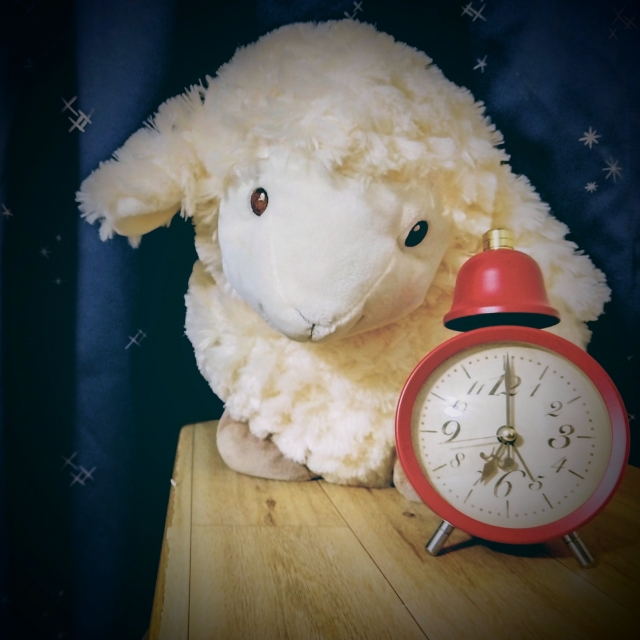
Photo by はたらくじん
The most important thing to pay close attention to in my personal observations is your caffeine and food intake, especially in the afternoon and evening. Consuming too much caffeine or heavy, rich meals close to bedtime can interfere with your sleep patterns. Caffeine is a stimulant that can disrupt your ability to fall asleep and reduce the quality of your sleep. opt for light, nutritious meals and limit caffeine consumption during the latter part of the day to help your body adjust to its new sleep schedule.
I have often heard that any caffeine consumption from 4 pm on-ward has a negative effect on your sleep, so unless you have to I would avoid drinking anything caffeinated past that time. Crafting a comfortable sleep environment is crucial for resetting your sleep schedule successfully.
Invest in blackout curtains to block out external light, ensuring a darker sleeping space that promotes better sleep. Select a mattress and pillows that provide adequate support and comfort for a restful night’s sleep. Maintaining a cool room temperature, as a cooler environment is generally more conducive to sleep. So, investing in an electric fan or finding a cozy spot underneath your air conditioner, with a light blanket is what I would recommend. I can’t go to sleep unless it’s at least slightly cool in the room, summer, winter, spring or fall. A comfortable, inviting sleep environment can significantly contribute to the quality of your rest as you transition back to your routine.
Resetting your sleep schedule after a summer break as an may require some adjustment, but the benefits are well worth the effort. A well-regulated sleep pattern will enhance your overall well-being, energy levels, and performance in the classroom. By creating a bedtime routine, managing your caffeine and food intake, and establishing a comfortable sleep environment, you’ll quickly adapt to your new schedule. As you embrace these practical steps, you’ll be better prepared to excel in your ALT role while enjoying a renewed sense of balance and vitality in your daily life.
Photo Credits:
Additional photo by はたらくじん
All other content (text) created by the original author and © 2023 MUSUBI by Borderlink
Top Photo: nekotaro-san on PhotoAC
One of the hardest habits for me to get used to after working regularly in Japan was drinking the morning tea with the entire office. I used to feel nauseous after drinking it on a relatively empty morning stomach due to the tannins. I didn’t want to offend the staff who poured it. I tried to remember how to make and pour it correctly myself when it was my turn to serve tea. I was initially not fond of green tea in Japan. Then one day I received a lovely gift after a delayed welcome party – a package of genmaicha.
Genmaicha is a Japanese tea that features roasted brown rice with some popped kernels. I had tried genmaicha in the past in the USA as a joke to try all of the “weird stuff” in a friend’s mother’s tea collection that we were ransacking in junior high school days. Don’t worry, we cleaned it up afterwards. I vaguely remember that the green tea looked like popcorn and tasted alright.
In any event, I had so many questions. Is it bitter? Internally I wondered, “Will it make me nauseous?” After pulling out the tea and scooping the suggested amount into the kyusu (a sort of teapot that came with my apartment), I noticed the roasted brown rice – and the popped kernels. After using rather hot water (the full 90 degrees), it tasted much milder than other green teas and was very gentle on the stomach. It was even soothing. It had the pleasant vegetal and sweet tastes of a sencha. But I really liked the flavor of the brown rice, which reminded me of unsweetened breakfast cereals or oatmeal.
It turns out that temperature is important when making green tea in any event to draw out the right flavors with each brewing while keeping yourself from pulling out excess tannins from your teas. You can brew the same tea multiple times for unique experiences – especially with high quality types like gyokuro teas. Using very hot water to brew gyokuro – especially for too long – will waste the flavors and make the drink unpleasant. There are all sorts of ideal temperatures and rules. Genmaicha is a little less complex.
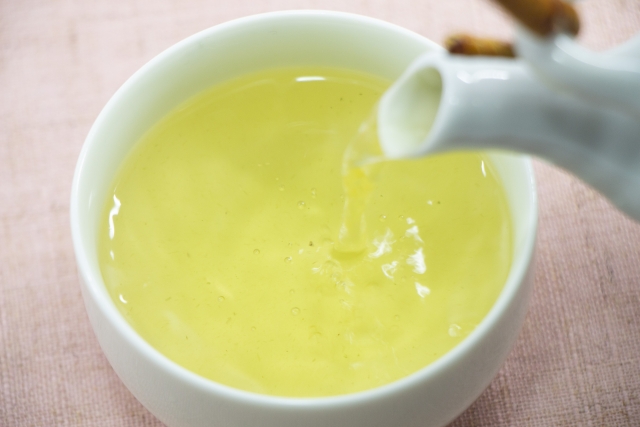
Photo by HiC
The high quality genmaicha that I received as a gift should actually have been brewed at around 80 degrees. As a general rule you can let this brew for about 60 seconds. Personally I’ve even brewed them for up to 90 seconds. But I would not exceed that length of time. Mass market brands may be fine to brew quickly at 90 or even 95 degrees for 30 to 60 seconds (typically at the lower end). Luckily genmaicha’s brown rice makes the whole tea drinking experience somewhat casual for a regular cup.
There are other rules regarding matcha genmaicha. This is another type of genmaicha which is made with matcha added. You can even enjoy bottled varieties from various brands such as Ito En. Ito En mixes matcha into their unsweetened, bottled genmaicha. This variety can also be enjoyed chilled (as can normal genmaicha).
There are many anecdotal stories regarding the origins of genmaicha. But one of the most noticeable claims is that it was created by tea sellers in the home field of Japanese green tea – Uji. Kyoto Uji Tea Hekisuien’s website claims that the company president Kishiro Horii “invented a blend of tea and rice in the Taisho era.” They say that they could not get a patent due to the simplicity of the manufacturing method. They further attest that they started to sell genmaicha in 1923 under their registered trademark “Hanayanagi.”
Now many manufacturers and tea brands make genmaicha. There are even guides for making your own genmaicha online. This could be fun for green tea lovers who know how to adjust to get their desired taste out of the drink.
If you’ve found the brewing of green tea to be difficult to master, want a mild and/or easy-to-make green tea that can be enjoyed daily, desire something to drink with friends that doesn’t require a tea brewing lesson, or simply want to try something new that’s easy on the stomach – then choose genmaicha!
Hekisuien’s website story regarding Hanayanagi genmaicha:
https://ujicha.co.jp/
Photo Credits:
Top Photo: nekotaro-san on PhotoAC
Additional photo by HiC
All other content (text) created by the original author and © 2023 MUSUBI by Borderlink
